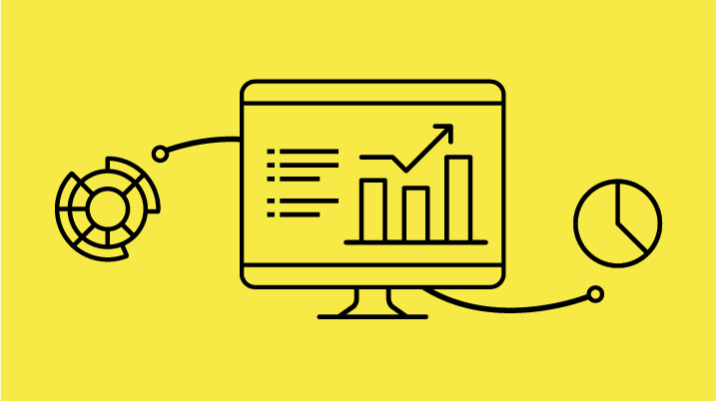Using Data and Automation To Drive Success

Data is bigger and better than ever. With the large amount of available tools, resources, and possibilities for using data and automation to grow a business, knowing where to focus can be overwhelming.
At Morgan & Morgan, we have developed comprehensive processes for the use of data and automation around three goals: ensure cases progress quickly, maximize the value of a case, and continuously improve the client experience.
Here’s how law firms of any size can use these processes to scale and differentiate their client experience.
Goal #1: Ensure Cases Progress as Fast As Possible
For those that have had their lives affected by injury, healing and peace of mind are the end game. Sometimes, being the client of a law firm is a necessary step along the way. Clients want their cases to progress as quickly (and as thoroughly) as possible to be able to move forward after a traumatic event.
Here’s how we use data to keep cases moving.
Establish Milestones
Establishing milestones is the first step to developing a framework for case progression. For personal injury cases, we’ve developed a series of timelines and benchmarks for: client outreach, establishing liability, confirming insurance coverage, and medical treatment. This framework makes it possible to quickly identify when a case is falling behind.
Make Each Touchpoint Count
By using a CRM such as Litify, every client interaction is logged by attorneys and staff on the case. Intake forms, phone calls, emails, SMS, document submissions, and more are stored with complete details and a timestamp.
Use Reports to Identify Gaps
Logging each touchpoint digitally enables reporting, which is where the true advantages begin.
At Morgan & Morgan, we use reports to measure things like the number of cases in each stage of the process or how long it takes for cases to settle / move into the litigation phase. Having this data readily available might result in questions such as, “what stage are cases getting stuck in?”, “what processes need improving?”, or “what’s the distribution curve for when cases are settled?”
Tracking the ‘what’, such as how many cases need review, can enable the discovery of the ‘why’, such as why so many cases are progressing too slowly. Without an active database, it can be much more difficult to identify problems, develop solutions, and understand where cases are getting stuck.
Platforms like Litify can make it possible for firms of any size to establish milestones, track client interactions, and build reports.
Goal #2: Maximizing The Value of Each Case
Injuries can result in lost wages, extensive medical bills, pain and suffering, and more. Ensuring that clients receive the compensation they deserve is core to our mission as a firm.
Gather The Right Information During Intake
Determining the potential value of a case begins from the first contact a client has with the firm. Fighting for the people for over three decades is what has enabled us to get it right. Over time, the team has carefully selected a series of questions that are indicative of how much the case might be worth. This allows the team to appropriately allocate resources, assign the case team, and build the strongest possible case for a maximum recovery.
(With Case Worth, our team can help you understand the potential value of your firm’s case too by submitting a request for an evaluation.)
Goal #3: Continuously Improving The Client Experience
While using technology and automation may sound antithetical to an empathetic experience, it’s quite the opposite. Thoughtful use of applications can enable quicker response times, increase transparency, and enable attorneys and case staff to focus on meaningful interactions. This ensures that clients feel heard, understand the process, and are communicated with regularly.
Expedite Turn Downs
The tried and tested intake experience is not only to establish the value of a case, but also if there is a case at all. A systemized intake process allows our team to notify clients as soon as possible if their case will be retained. Developing rigorous procedures for turned down cases is also part of a thoughtful client experience. At Morgan & Morgan, an attorney will make the phone call to explain why we are unable to take the case.
Automate Essential Communication
Developing a thorough timeline for client communication ensures that there is a continuous flow of information. Using automation when possible can take redundancy out of staff workload and make it possible to focus on more nuanced communication. For example, an automated email after initial contact can include important information.
Create A Feedback Loop
Aside from messages relating to the case directly, surveys can be an invaluable tool for measuring client satisfaction and understanding where improvements are needed. By setting up automated check-ins at specific intervals, both negative and positive feedback can be incorporated into practice.
Avoiding the use of automation in the client experience can lead to unhappy clients, important information getting missed, or have a negative impact on the case.
What Matters In The End
Using data to successfully drive decision making is not a privilege reserved for large firms or corporations. With a number of available tools, law firms of any size can begin developing their approach to data and automation by focusing on client experience at the core. By tracking case progression and client interactions, gaps can be identified, processes can be improved, and conversations can be made more meaningful.
In the end, every log, dashboard, and report has been crafted around the one thing that matters: fighting for clients so that those who have been wronged and injured receive the justice and compensation they deserve.
Injured? Getting the compensation you deserve starts here.

Injured?
Not sure what to do next?
We'll guide you through everything you need to know.